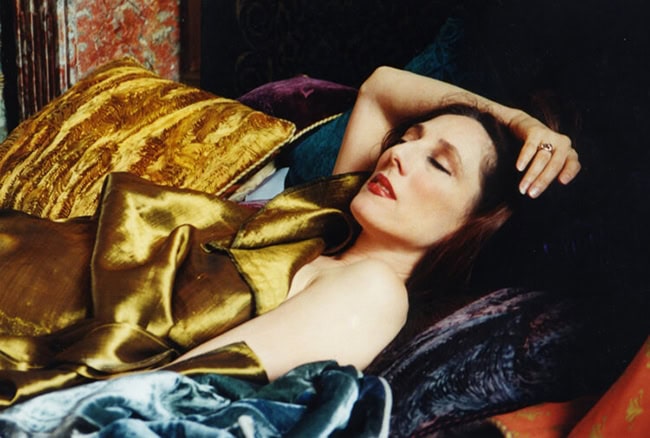A preview of Ida Rubinstein: The Final Act at The Playground Theatre
Posted: January 21st, 2020 | Author: Nicholas Minns | Filed under: Preview | Tags: Adam Clayton-Smith, Bill Como, Charles and Patricia Lester, Charles Morgan Jones, Christian Holder, Darren Berry, David Roger, Ida Rubinstein, Kathryn Worth, Lindsay Kemp, Lord Moyne, Marco Gambino, Matthew Ferguson, Naomi Sorkin, Romaine Brooks, The Playground Theatre | Comments Off on A preview of Ida Rubinstein: The Final Act at The Playground TheatreA preview of Christian Holder’s Ida Rubinstein: The Final Act, January 17

Unfortunately, due to Naomi Sorkin tripping over her cat and breaking her wrist two days before the opening, the run of Ida Rubinstein: The Final Act has been postponed until September.
The creative path to Christian Holder’s Ida Rubinstein: The Final Act, which opens at The Playground Theatre on January 23 and runs until February 15, is a reflection of the forces that shaped the life of its eponymous central figure. Rubinstein was born in Russia of wealthy Jewish parents who died when she was young, so she was brought up by an aunt in St. Petersburg. Determined to make a career on the stage, she created a scandal by appearing as Salomé in the play of Oscar Wilde, but her powerful stage presence and erotically charged mime attracted the attention of Serge Diaghilev. Invited to join his Ballets Russes, Rubinstein worked with choreographer Mikhail Fokine and costume designer Léon Bakst to create the roles of Cléopâtre, and later Zobeide in Scheherezade for the first two Diaghilev seasons in Paris. She fell out with Diaghilev soon after, but she remained in Paris, using her wealth to start and maintain her own company. She continued her association with Fokine and Bakst in commissioning Le Martyre de saint Sébastien from Claude Debussy (with text by Gabriele D’Annunzio) and Boléro from Maurice Ravel. Later she produced Ravel’s La Valse, which Diaghilev had commissioned but rejected. In World War I she served the Red Cross in France (wearing an outfit designed by Bakst!) and on the advice of her lover, Lord Moyne, she moved to London in 1939 where she worked for the British Legion. After the war, she returned to Paris and retired to Vence where she lived as a recluse until she died in 1960.
Three years later, a young Christian Holder won a scholarship to study with Martha Graham in New York. Born in Trinidad and raised in England, Holder was supposed to return to London after his studies but his talent was spotted by Robert Joffrey who invited him to join his company, where he was to become one of its iconic dancers. Soon after Holder joined Joffrey Ballet, Naomi Sorkin, born of Russian Jewish parents in Chicago, joined American Ballet Theatre where she ascended through the ranks to become a principal dancer known for her lyricism and dramatic expression. The founder and editor of Dance Magazine, the late Bill Como, once suggested to her that she would be perfect in the role of Ida Rubinstein. In the 80s Sorkin left New York for London after Lynne Seymour encouraged her to join Lindsay Kemp’s company; she created the ballerina in his Nijinsky and played Hermia in his Midsummer Night’s Dream. She has lived in London ever since.
After leaving Joffrey Ballet, Holder remained in New York as dancer, choreographer and costume designer before returning to London ten years ago where he renewed his friendship with Sorkin. Finally, sixty years after Rubinstein’s death, they are able to combine their talents and experience to vindicate Como’s intuition; Holder has written the book and Sorkin embodies the legendary diva.
The theatrical device of Ida Rubinstein: The Final Act is deceptively simple. A reporter, Edward Clément, (Adam Clayton-Smith) interviews Rubinstein in the last year of her life despite the efforts of her personal assistant Soretto (Kathryn Worth) to protect her privacy. Clément’s research mixed with his natural charm evokes in Rubinstein a flood of memories and reflections that transform her spirits and allow us to enter vicariously her historical and artistic milieu. Woven into these memories are the figures of Gabriele D’Annunzio (Marco Gambino), her lover Romaine Brooks (Kathryn Worth), and the composer Maurice Ravel (pianist Darren Berry). Diaghilev’s disembodied voice-over can be heard with one of Matthew Ferguson’s video projections and we hear Lord Moyne through his love letters to Rubinstein.
As the interview becomes more intimate, Rubinstein asks Clément: “Do you believe in destiny?” It’s a question that threads as surely through Rubinstein’s life as through the peripatetic process of the production; it also provides the catalyst of the play’s dramatic dénouement.
I saw a run-through in a studio at the end of a heavy week of rehearsals but Sorkin’s interpretation of Rubinstein, abetted by her cast, shines through. What Holder has done is to allow dance and theatre to release a dynamic sense of Rubinstein’s life from the historical facts of her biography. All that remain to be completed are the colours and textures that David Roger’s sets and costumes, Charles and Patricia Lester’s textiles and Charles Morgan Jones’ lighting will provide when the production at The Playground Theatre opens on Thursday.